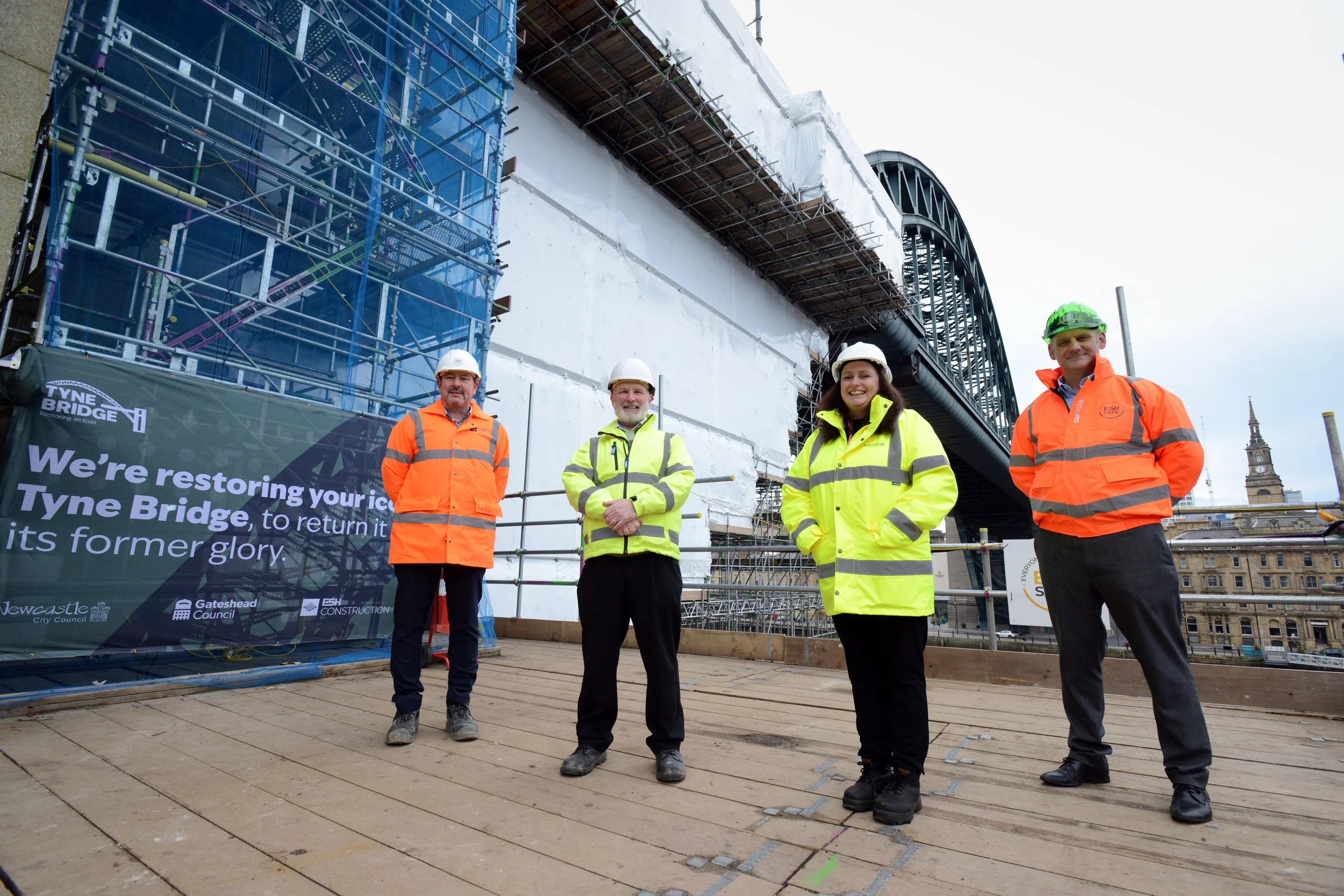People advised to plan ahead as Tyne Bridge restoration starts
With one week to go until the major restoration of the iconic Tyne Bridge starts, the local authorities have released the following advice.
With just one week to go until the major restoration of the iconic Tyne Bridge gets under way, drivers are being warned that there will be overnight closures on the bridge in the run-up to works starting, and lane restrictions will be in place from 2 April which will be hugely disruptive to the travelling public.
Newcastle and Gateshead councils are advising people to plan ahead, follow the travel advice and make the switch to public transport. Access will remain open at all times for people walking and cycling.
The full schedule includes:
27 March - Overnight closure from 8pm until 6am
28 March - Overnight closure from 8pm until 6am
2 April - Off-peak lane restrictions from 9.30am until 3.30pm
3 April - Off-peak lane restrictions from 9.30am until 3.30pm & Overnight closure from 8pm until 6am
4 April onwards - One lane in each direction
From 2 April, lane restrictions will be in place which will see capacity halved on a major route used by up to 70,000 vehicles a day between Newcastle and Gateshead, as the vital restoration programme gets underway.
The current programme of works will see lane restrictions in place for a minimum of two years, with further temporary lane closures and overnight closures scheduled for the remaining two years of restoration works.
The start of the lane restrictions will be in place during the school Easter holidays when traffic is lighter, which should initially minimise the impact on the travelling public but delays and congestion are expected when traffic returns to normal levels. This could see delays of up to 40 minutes at peak travel times.
A number of improvements have been made to the highways network to prioritise buses to ease congestion throughout the four-year project.
Pamela Holmes, Assistant Director of Transport at Newcastle City Council said: “We are fully aware of how disruptive this restoration programme will be for the travelling public and we’ve done a lot of engagement with residents, businesses and employers in the run up to the work starting. This is so people are aware that this is a four-year refurbishment programme and lane restrictions will be in place for a number of years.
“People need to plan their journeys, think about alternatives, whether they take public transport, or active travel options such as walking or cycling, or use the many park and ride facilities available. All the travel advice is available on our website at www.tynebridge.org but people need to plan ahead and allow more time for their journeys as this restoration programme to preserve the bridge for future generations gets underway.”
With the bridge reduced to one lane in each direction to protect the workforce and the public during the main bridge deck restoration, heavy congestion is expected on all approaches to the Tyne Bridge on both Newcastle and Gateshead sides.
The Quayside is also expected to be busy as people seek to use the Swing Bridge.
The public are strongly advised to use public transport where possible when travelling to and from the city centre.
As part of the restrictions on the bridge, one footway will be available at all times.
Walking and cycling routes around the bridge are being improved where possible to encourage more people to walk and cycle.
Newcastle City Council is providing additional safe and secure cycle storage in its city centre.
People should also consider Park and Ride sites, which can reduce congestion and help people get into the centres of Newcastle and Gateshead quicker.
People travelling across the region are advised to avoid travel through the centre of Newcastle and Gateshead and stay on the major trunk roads and use other cross river crossings such as the A1, A19, Tyne Tunnel and Scotswood Bridge.
The Redheugh Bridge will still be available for cars, but this is also expected to be heavily congested and is also subject to weather-related closures, particularly for high-sided vehicles in high winds.
People who need to drive into the city are advised to consider car sharing, travelling at off-peak times when the roads are quieter, as well as leaving more time for their journey and to expect delays.
Large employers are also asked to consider staggering start and finish times to avoid peak travel times and encouraging working from home.
Esh Construction will deliver the hugely complex and challenging project on behalf of the councils. Over 900 steelwork repairs have been identified on the Grade II*listed structure, as well as grit blasting and re-painting, concrete repairs, drainage improvements, stonework and masonry repairs, bridge deck waterproofing and resurfacing, parapet protection and bridge joint replacement. The four-year programme is expected to be complete in Summer 2028, ahead of the bridge’s centenary in October 2028.
The Tyne Bridge restoration is funded by the UK Government, as well as monies from both Newcastle City Council and Gateshead Council. The Government signed off £35.2 million on 2 February 2024 towards the cost of two projects: the restoration of the Tyne Bridge and the Central Motorway upgrade. The two councils still await confirmation of the remaining £6 million which was announced as part of the Network North plan in October.

